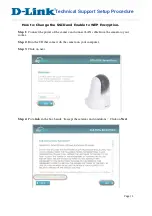Camera Operation & Features
37
PixeLINK PL-A780
Document No.: 04646-01
MACHINE VISION CAMERA
SYSTEM GUIDE
Copyright © 2004 PixeLINK
All Rights Reserved
data returned from the camera. The format of the synchronization code is shown in Section 9
on page 56.
Descriptors are created by increasing the number of descriptors in the descriptor
configuration CSR. A new descriptor will have the same values as the current descriptor or, if
it is the first descriptor created, the camera settings. With more than one descriptor, the
camera will cycle through the descriptors repetitively.
Descriptors can be changed by updating the descriptor values in camera memory.
To delete a descriptor, reduce the number of descriptors in the descriptor configuration CSR.
The highest indexed descriptors will be deleted first.
For more information on the descriptor structures, refer to Section 9.2 on page 57.
5.1.4.4 General Purpose Outputs
Auto No
Manual Yes
One-time
Auto
No
Off Yes
CiD Yes
General Purpose Output (GPO) signals are controlled by this
feature. The output signal is defined by a mode, polarity and a
number of parameters that vary in meaning with the mode. For a
complete description of the PL-A780 GPO modes and settings, see
Section 8.2.
4 GPO signals can be controlled. GPO numbers 1 and 2 are
available externally. 3 and 4 are only available on the board-level
variant of the PL-A780.
Applies to PL-A780 cameras only.
Parameter Unit Type
Min
Max
Default
Step
Size
Comments
Mode None
Absolute
0
4
0 1
Polarity
None
Absolute
0
1
0
1
0: Negative, 1: Positive
Parameter 1
Parameter 2
Parameter 3
5.1.4.5 Look Up Table
In the PL-A780, the Look Up Table (LUT) has 1024 2-byte entries that range in value from 0
to 1023 (10-bit depth). The LUT is used to implement the IIDC Gamma feature but it can also
be used to implement any LUT transfer function required.
The LUT is written to camera memory as a block of 1024 words at the address specified by
the Look Up Table Offset register, starting with Word 0 (Black).
When the LUT or Gamma function is active (ON), every pixel is converted according to the
transfer function stored in the LUT. With both functions off, the LUT is bypassed and a linear
transfer function is used.
Since both Gamma and the LUT use the same camera memory, whichever function was last
turned on will control the memory and the other function will be turned off. Turning on the
Gamma function will overwrite the LUT with the appropriate gamma values.


















